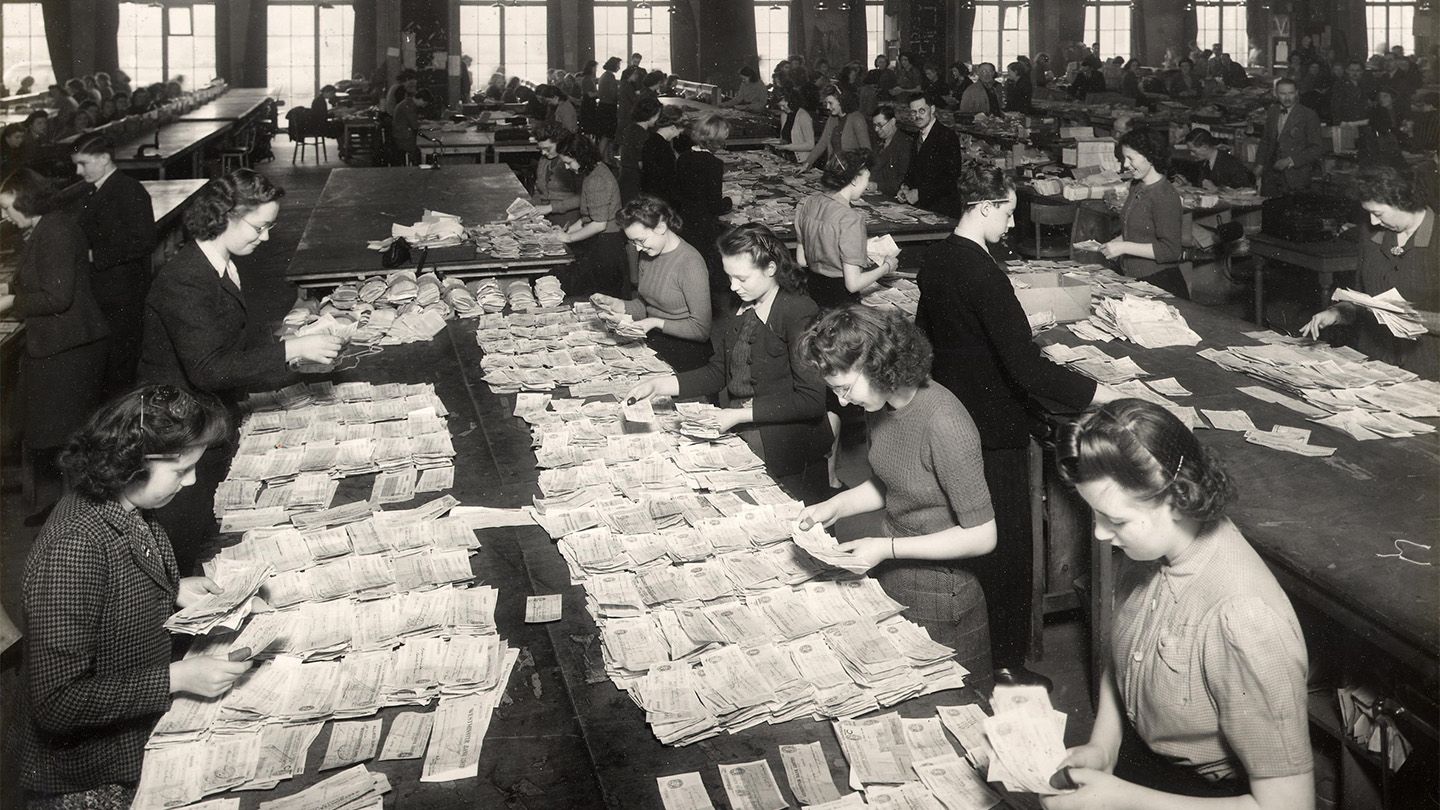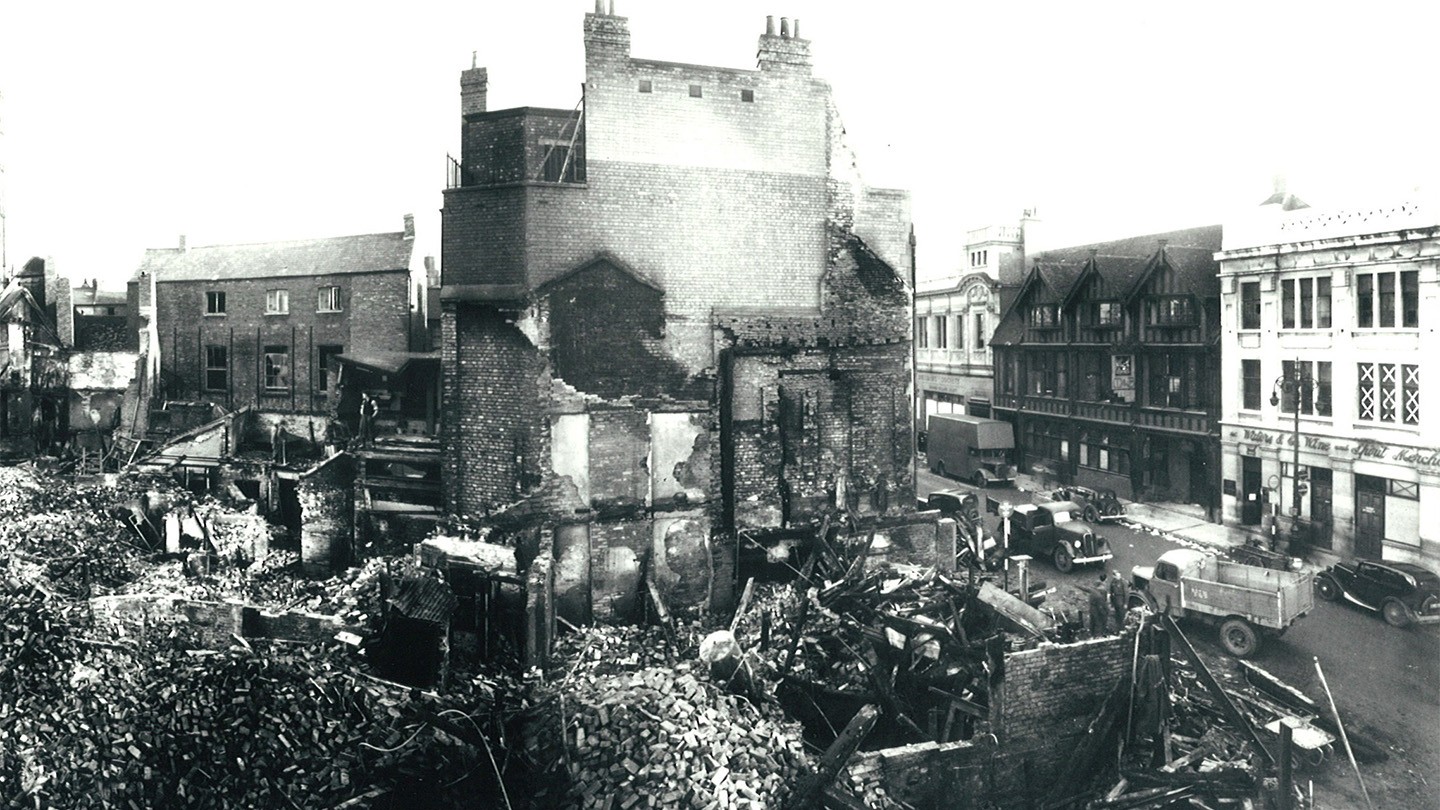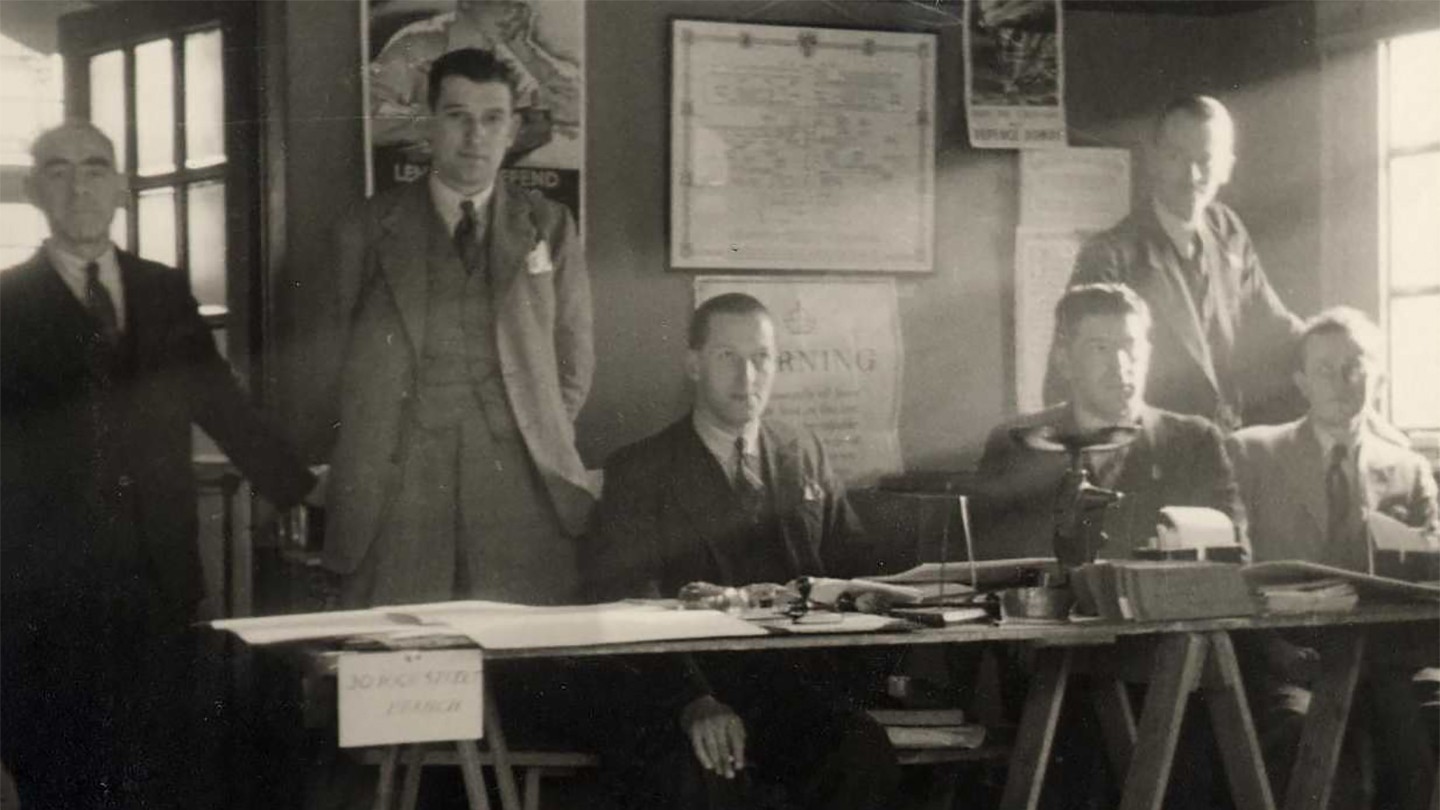
History
From the archives: keeping the bank running during World War Two
With the outbreak of World War Two, over 6,000 men and women at Barclays – nearly half of the bank’s workforce at the time – were called on to serve in the forces. To mark Remembrance Day, we share vivid first-hand reports of what daily life was like for the staff who kept the bank running.
The daily journey to the office for Barclays staff who continued to work during World War Two could be dangerous, especially for those based in London. Air raids destroyed 31 branches and damaged a further 724 – two-thirds of which were in London.
The bank’s staff magazine Spread Eagle reported on the bombings and on the heroic efforts of colleagues who carried on with business as usual. After branch bombings, staff often located to neighbouring Barclays branches – and some conducted business at a rival bank, nearby pub or even on the street. One report in the Spread Eagle in 1941 detailed a bombing in Coventry:
“Readers will be interested to know that, although Coventry Branch suffered severe damage from high explosive bombing, the small part of the premises remaining serviceable was opened to the public by 11 o'clock on the Saturday following the raid. On the previous day the Staff had rescued such records as were undamaged, with buildings burning on either side and walls in the vicinity crashing to the ground. Part of the Staff carried on at the main Branch, which was open to the four winds of the earth, and the remainder were evacuated to Canley Sub-Office. Those at the main office have been working under the most adverse conditions, cheerfully and efficiently, and no praise could be too high for what they have done.”

Despite damage caused by a bombing, part of the Coventry branch reopened to the public the weekend after the raid.
In September 1944, periods of long and heavy shelling meant that the Staff was confined to the premises for long hours and sometimes into the early hours of the morning.
A report in the Canterbury War Record about the Barclays Dover branch – which was a frequent victim of bombing – notes:
“When shelling of the town commenced, it soon became apparent that considerable time was lost through the Staff being obliged to shelter in the basement, so the book-room and strong-room was fitted out as an office and thereafter work proceeded without interruption during periods of hostile activity.
“In September 1944, periods of long and heavy shelling meant that the Staff was confined to the premises for long hours and sometimes into the early hours of the morning. On one occasion about this time a shell exploded outside the premises and caused extensive structural damage. The Staff was obliged to remain in the basement until 5am the following day. Lighting and heating facilities had failed and there was flooding from sewage water. Only a few hours remained before the Bank's opening time, but with the aid of a barrow borrowed from a builder, essential equipment was moved to temporary premises and business continued.”
Protecting the day’s work
To ensure banking business continued if hostilities broke out during the war, each local head office was asked to manage the branches in its own area. Every branch was assigned a ‘custodian’ office – and at the end of each working day, colleagues had to move ledgers and important materials there for safekeeping and protection from bombings. Despite the extensive damage, most of the strong rooms remained intact.
Those at the main office have been working under the most adverse conditions, cheerfully and efficiently, and no praise could be too high for what they have done.

The Spread Eagle reported on World War Two bombings and the heroic efforts of their colleagues.
One colleague, DH Jarrett, who joined a Barclays London branch in 1939, described the daily process of moving ledgers:
"You had to have your day’s work taken to a custodian branch at the end of every day, because if your branch was blown up they could then reconstruct the books […] So what we had to do, when we’d taken out what they called cheque ledgers, and called the ledgers at the end of the day, those cheque ledgers had to be, usually by me, walked up the hill to Highgate Village branch and put in their strong room. I’ve got a feeling theirs came down to us. And then you had some things called black books. Every fortnight, when you took out the ledgers and balanced them, these books went up to the custodian branch and the last fortnight’s ones came back to you, plus some other subsidiary figures went up each day. So, if you were blown up and the ledgers destroyed, they could reconstruct the bank’s figures; but that had to be done every day, at the end of the day’s work."